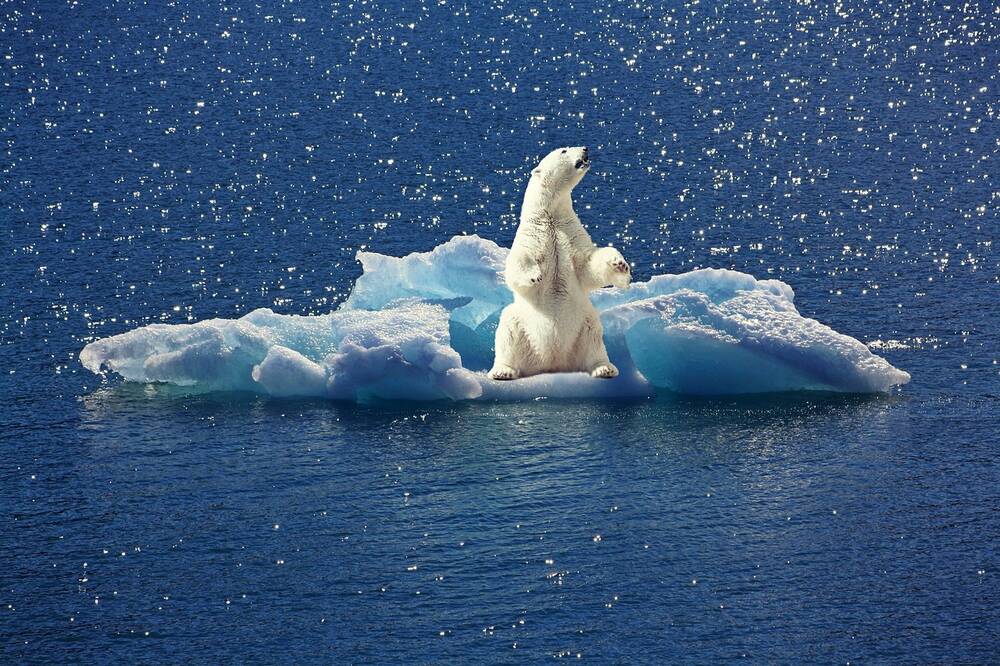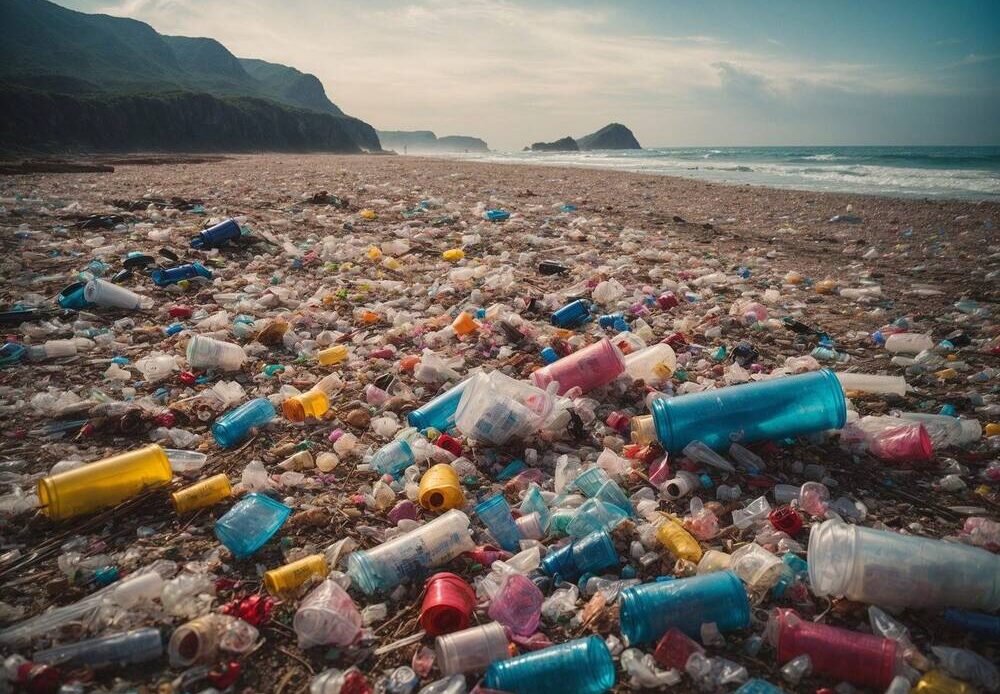The world is facing a multitude of environmental threats, many of which are already having devastating consequences. With each passing year, these threats only grow more urgent, and the need to address them becomes increasingly pressing. In 2023, the world will continue to face significant challenges in the fight against climate change, deforestation, and plastic pollution, among many others.
Climate Change
One of the most significant environmental threats facing the world today is the impact of climate change. Rising global temperatures, melting polar ice caps, extreme weather events, and loss of biodiversity are just some of the consequences of this rapidly unfolding crisis.
Rising Global Temperatures
One of the most visible impacts of climate change is the rise in global temperatures. According to NASA, the past decade has been the warmest on record, with 2020 ranking among the hottest years on record. This rise in temperatures is driving a host of other environmental issues, including rising sea levels, more frequent and severe heatwaves, and increased risk of drought in some regions.
Melting Polar Ice Caps and Rising Sea Levels

The melting of the polar ice caps is another significant consequence of climate change. As the ice melts, global sea levels rise, with potentially catastrophic consequences for low-lying areas and island nations. This can lead to increased flooding, coastal erosion, and a range of other negative impacts.
Extreme Weather Events and Natural Disasters
The impact of climate change can also be seen in the increasing frequency and severity of extreme weather events, such as hurricanes, floods, and wildfires. These events can cause significant damage to infrastructure, disrupt food supplies, and displace millions of people from their homes and communities.
Loss of Biodiversity and Ecosystems
Finally, climate change is contributing to the loss of biodiversity and ecosystems around the world. As temperatures rise, species are forced to adapt or die, leading to a decline in the number and variety of species on the planet. This loss of biodiversity can have far-reaching consequences for ecosystems and the services they provide, such as clean water and air, fertile soil, and pollination of crops by bees and other insects.
Deforestation and Habitat Destruction

Another significant environmental threat facing the world today is deforestation and habitat destruction. This is driven by a range of factors, including agricultural expansion, urbanization, and the demand for wood products.
The Amazon Rainforest Crisis
The Amazon rainforest is one of the most biodiverse and ecologically valuable regions on the planet, but it is also under threat. Deforestation rates in the region have increased significantly in recent years, driven in part by the demand for agricultural land and the expansion of the livestock industry. This destruction of the Amazon rainforest is a major contributor to climate change, as well as a significant loss of habitat for wildlife.
The Amazon rainforest is home to an estimated 10% of the world’s known species, including many that are endemic to the region. The loss of this habitat is having a devastating impact on wildlife populations, with many species facing extinction. For example, the Amazon river dolphin, one of the most iconic animals of the region, is under threat due to habitat destruction and pollution of its habitat.
In addition to the loss of biodiversity, deforestation in the Amazon is also contributing to climate change. Trees absorb carbon dioxide from the atmosphere, and when they are cut down or burned, that carbon is released back into the atmosphere. The Amazon rainforest is a critical carbon sink, and its destruction is exacerbating the effects of climate change.
The Impact on Wildlife Populations
The destruction of forests and other habitats around the world is also having a significant impact on wildlife populations. Many species are declining in number or facing extinction as a result of habitat loss, especially those that rely on a particular ecosystem for their survival. This loss of biodiversity can have far-reaching impacts on ecosystems and the services they provide.

For example, the loss of pollinators such as bees and butterflies can have a significant impact on food security, as many crops rely on these insects for pollination. The loss of predators can also lead to an increase in populations of herbivores, which can in turn have negative impacts on vegetation and other species.
The Role of Agriculture and Urbanization
Agriculture and urbanization are two of the primary drivers of deforestation and habitat destruction worldwide. As the global population continues to grow and demand for food and housing increases, the pressures on natural ecosystems will only continue to mount. Addressing these systemic issues will require a combination of policy changes, technological innovation, and changes in consumer behaviour.
One potential solution is to shift towards more sustainable agricultural practices, such as agroforestry and regenerative agriculture, which can help to restore degraded ecosystems and reduce the need for new agricultural land. Urbanization can also be made more sustainable through measures such as green roofs and walls, which can help to provide habitat for wildlife and reduce the urban heat island effect.
Reforestation Efforts and Solutions
One potential solution to the problem of deforestation is reforestation. By planting new trees and restoring degraded ecosystems, we can help to rebuild habitats and sequester carbon from the atmosphere. There are many initiatives around the world focused on reforestation, such as the Trillion Trees Campaign, and these efforts can make a significant difference in the fight against climate change and habitat destruction.
In addition to reforestation, there are many other solutions that can help to address the problem of deforestation and habitat destruction. These include reducing the demand for wood products through measures such as recycling and using alternative materials, protecting important habitats through measures such as national parks and wildlife reserves, and promoting sustainable land use practices through policies and incentives.
Ultimately, addressing the problem of deforestation and habitat destruction will require a concerted effort from governments, businesses, and individuals around the world. By working together, we can help to protect the world’s biodiversity and ensure a sustainable future for generations to come.
Plastic Pollution and Waste Management

Finally, plastic pollution is another significant environmental threat facing the world today. Our dependence on single-use plastics and a throwaway culture have led to mountains of plastic waste, much of which ends up in our oceans and ecosystems.
Plastic pollution is a growing concern around the world. It is estimated that eight million tons of plastic waste end up in the ocean each year, and this number is expected to increase in the coming years. This plastic waste can have a devastating impact on marine life, as well as on the health and well-being of ocean ecosystems.
The Great Pacific Garbage Patch
The Great Pacific Garbage Patch is one of the best-known examples of the impact of plastic pollution on the world’s oceans. This massive accumulation of plastic waste, located between Hawaii and California, is estimated to be twice the size of Texas and growing. As plastic accumulates in the ocean, it can harm marine life, disrupt food chains, and have other negative impacts on the health and well-being of ocean ecosystems.
The Great Pacific Garbage Patch is not the only area affected by plastic pollution. Plastic waste can be found in oceans around the world, including in the Arctic and Antarctic. This is a global problem that requires a global solution.
Microplastics and their Effects on Marine Life
In addition to larger plastic items, microplastics are also becoming a significant concern. These tiny particles of plastic, often less than 5mm in size, can be ingested by marine life, leading to a range of negative health effects. This can include digestive issues, entanglement, and even death.
Microplastics can come from a variety of sources, including the breakdown of larger plastic items, microbeads in personal care products, and even synthetic fibers from clothing. As these particles accumulate in the ocean, they can have a significant impact on the health and well-being of marine life.
Single-use Plastics and Consumer Habits
While plastic pollution is a systemic issue, it is also driven in part by individual consumer habits. The amount of plastic waste we produce as a society is directly tied to the choices we make as individuals, from the products we buy to how we dispose of them. By making conscious choices to reduce our plastic use and adopt more sustainable habits, we can all play a role in addressing this critical environmental challenge.
Reducing our use of single-use plastics is one of the most effective ways to address plastic pollution. This can include using reusable bags, water bottles, and containers, as well as choosing products with minimal packaging. By making these small changes in our daily lives, we can help reduce the amount of plastic waste that ends up in our oceans and ecosystems.
Innovative Recycling and Waste Reduction Strategies
Finally, efforts to address plastic pollution must also include innovative recycling and waste reduction strategies. This can include developing new technologies to convert plastic waste into usable products, as well as promoting the use of reusable containers and packaging materials. By working together to develop and implement these solutions, we can help to create a more sustainable and resilient future for all.
There are many innovative solutions being developed to address plastic pollution. For example, researchers are working on developing biodegradable plastics that break down quickly and do not harm the environment. Other researchers are working on developing new recycling technologies that can turn plastic waste into valuable raw materials. By investing in these innovative solutions, we can help to create a more sustainable future for all.

